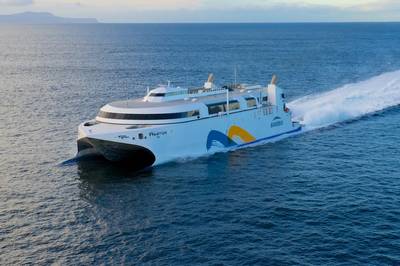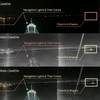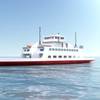Wärtsilä Waterjets Power World's Fastest Ferry
Wärtsilä's axial waterjets power the Francisco, claimed to be the world's fastest high-speed ferry and the first fast ferry to utilize liquefied natural gas (LNG) as fuel. The vessel has successfully passed its sea trials and is now ready to commence commercial operations.
Wärtsilä has provided the waterjets for what is claimed to be the world's fastest high speed ferry. In addition to two of its LJX1720SR axial waterjets, Wärtsilä has also supplied an advanced propulsion control system for the Francisco. The 99m catamaran attained a lightship speed of 58.1 knots (107.6 km/h) in its recent speed trials. The ship was built by the Australian shipyard Incat Tasmania Pty Ltd. on behalf of South American operator Buquebus. It will transport both passengers and cars between Uruguay and Argentina.
The Wärtsilä equipment was supplied at the end of 2012, and commissioning of the vessel took place in early 2013. A feature of the Wärtsilä waterjets is the high level of efficiency, which allows impressive power to be applied on relatively small jets. Furthermore, the compact dimensions enabled the waterjets to be installed within the ferry's transom, thus saving valuable space.
Wärtsilä's Lipstronic 7000 propulsion control system for maneuvering the vessel gives effective, reliable control of all the waterjets and is very easy to use. It is designed in accordance with IMO (International Maritime Organization) regulations and fulfils the requirements of all leading classification societies. The system controls and indicates the steering angle, bucket position and impeller speed, and can be operated alternatively with joystick control or autopilot. The system's built-in redundancy makes it safe and robust.
According to Incat, the Francisco is now the fastest ship in the world. While there are speed boats that can surpass 58 knots, there is no vessel afloat that can reach these speeds and that is able to carry 1,000 passengers and 150 cars. The ferry will have an operating speed of 50 knots, and in crossing the River Plate (Rio de la Plata) at high speed, the ferry will be able to viably compete with air traffic between Uruguay and Argentina.
"The Francisco will be the largest catamaran to be operated by Buquebus, and the fastest, environmentally cleanest, and most efficient high speed ferry in the world," said Juan Carlos Lopez Mena, President at Buquebus.
wartsila.com












